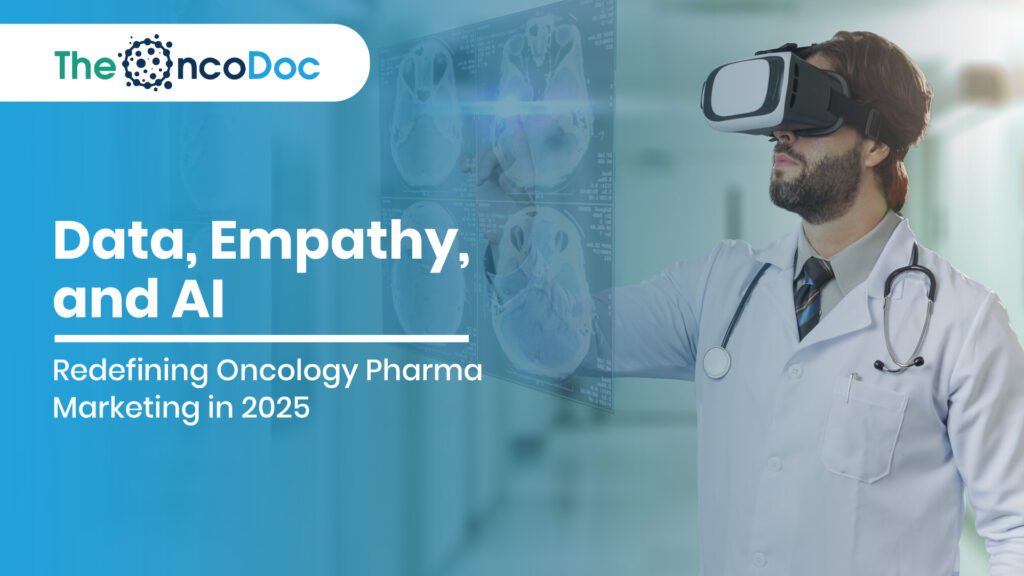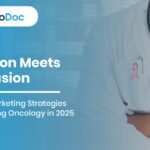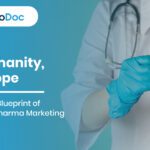Introduction: Marketing With Purpose in Modern Oncology
In 2025, oncology pharma marketing has moved beyond mere brand visibility – it’s about shaping healthier futures. With cancer incidence still rising worldwide, and treatment landscapes becoming more personalized, the way brands communicate with oncologists, patients, and caregivers must evolve. The integration of AI-driven insights is now fundamental to tailoring messages that resonate deeply across all audiences.
The winners in this new era blend data intelligence, emotional resonance, and cutting-edge technology to deliver campaigns that not only educate but also change behaviors. This is marketing that feels less like persuasion and more like public health intervention.
Here, we explore 20 key strategies driving oncology marketing in 2025, each showing how brands can turn insight into measurable impact.
1. The New Patient Engagement Model
Today’s patients are informed, digitally connected, and expect clear, empathetic communication. Successful campaigns now:
Provide step-by-step guides on diagnosis and treatment.
Use patient testimonials to break stigma.
Offer culturally relevant education materials.
The result is a more empowered patient population that approaches oncology care proactively, often initiating conversations with their doctors earlier than before. Patient empowerment tools increasingly include AI-powered symptom trackers to encourage timely medical visits.
2. Segmenting Beyond Demographics
Instead of relying on basic age or location filters, marketers now integrate:
Cancer subtype data.
Behavioral health indicators.
Barriers to care insights.
AI platforms cross-reference these inputs to craft campaigns that speak to specific needs in specific moments. This precision reduces waste and increases patient action rates. Such segmentation helps align marketing efforts closely with clinical pathways.
3. GP-Led Early Detection Partnerships
General practitioners often see cancer symptoms first but may lack oncology-specific prompts. Pharma brands now:
Sponsor microlearning CME videos.
Supply decision-making flowcharts.
Share patient conversation scripts to help guide referrals.

These tools empower GPs to make timely referrals and improve early cancer detection rates.
4. Omnichannel Marketing That Feels Seamless
Brands that thrive are those whose messages follow the audience naturally:
Awareness videos on social media.
Push alerts for screening camps.
Printed materials in clinics for offline audiences.
When channels work together rather than in isolation, oncology campaigns become part of everyday awareness rather than sporadic promotions. This synergy enhances patient journey continuity and reinforces messaging impact.
5. Behavioral Triggers That Drive Screening
Campaigns increasingly use behavioral science to prompt action:
Personalized SMS reminders timed to birthdays or local health days.
Interactive quizzes that lead users to book screenings.
Rewards like discounted lab tests for completing checkups.
This approach creates low-friction pathways to preventive care, especially in populations with screening hesitancy. Behavioral triggers help overcome procrastination and motivate prompt action.
6. Storytelling as a Clinical Tool
Survivor stories are no longer just “nice to have” – they’re integrated into oncology marketing strategy:
Video diaries showing recovery journeys.
Local-language testimonials from rural survivors.
Doctor-patient interview series that humanize treatment.
Storytelling builds emotional connection, which increases campaign recall and referral rates. It also reduces stigma and builds hope within communities.
7. AI-Personalized Messaging
Artificial intelligence matches messages to an individual’s likelihood to act:
A frequent Google search for “chronic cough” triggers lung cancer awareness content.
Recent searches for “blood in stool” prompt colon cancer testing ads.
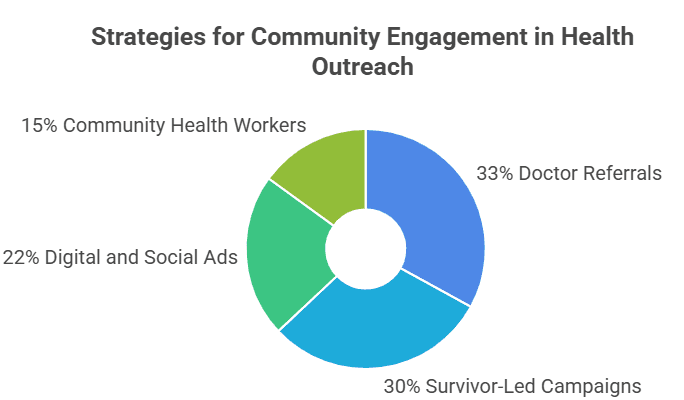
This precise targeting increases engagement and screening adherence.
8. Cultural and Vernacular Targeting
In a diverse country, awareness efforts that speak in the audience’s language – both literally and culturally – see higher engagement:
Folk performances in rural areas.
Dialect-specific radio ads.
Community theater plays on cancer prevention.
By embracing linguistic diversity, campaigns foster greater trust and participation across varied communities.
9. Empowering Oncologists With Digital Tools
Brands offer oncologists platforms that:
Provide summarized research updates.
Enable patient progress tracking.
Allow case discussion with peers worldwide.
This makes the pharma brand a trusted resource partner instead of just a supplier. Enhanced tools promote collaborative learning and clinical excellence.
10. Health Impact–Focused Metrics
Oncology marketers are shifting from measuring clicks to measuring lives touched:
Screening registrations.
Increase in GP referrals.
Engagement with symptom-checker tools.
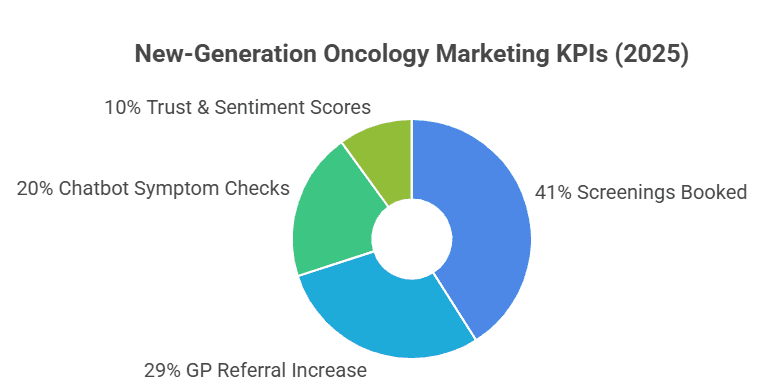
Focusing on these outcomes aligns marketing goals with real-world cancer care improvements.
11. Key Opinion Leaders With Local Roots
Partnering with respected local oncologists, nurses, or survivor advocates boosts trust faster than global celebrity endorsements. These voices can bridge the gap between medical expertise and community understanding.
Local KOLs understand regional health beliefs, language nuances, and barriers to care in ways that outsiders cannot. They also tend to have direct relationships with referring physicians and community leaders, making them invaluable for grassroots awareness. By including these figures in campaign planning, pharma brands can ensure messaging feels authentic rather than imposed.
12. Predictive Awareness Campaigns
AI detects early warning signs of disease clusters, allowing just-in-time interventions. This makes campaigns more responsive and often prevents delayed diagnoses in high-risk regions.
For example, a spike in online searches for “persistent cough” in one district may prompt a targeted lung cancer awareness blitz. Predictive analytics also help allocate resources – such as mobile screening vans or local CME sessions – to where they’ll have the highest immediate impact. This proactive strategy transforms marketing into preventive healthcare.
13. Gamified Prevention Programs
From “Know Your Risk” quizzes to district-level screening challenges, gamification is transforming awareness into a community-driven movement.
Participants receive digital badges, certificates, or vouchers for completing screenings, which can be shared on social media to encourage peers. Gamification works because it turns a medical task into a sense of achievement and friendly competition. By embedding fun into prevention, brands keep cancer awareness active year-round rather than seasonal.
14. Integrating Wearable Health Alerts
Wearables connected to oncology apps now trigger proactive screening recommendations when they detect unusual changes in vitals or lifestyle trends.
For instance, sustained unexplained weight loss or irregular heart rhythms can prompt users to schedule a checkup. These alerts create a bridge between everyday health tracking and preventive cancer care. The data collected – when anonymized – also helps pharma marketers design more targeted public health messages based on real-world trends.
15. Collaborative Public Health Campaigns
Partnerships with NGOs and public health bodies give campaigns more reach and credibility, especially in low-trust or rural markets.
Co-branded initiatives can leverage government health infrastructure while benefiting from the pharma company’s marketing expertise. These collaborations often include joint screening events, multilingual health drives, and subsidized diagnostic services. When communities see both public and private players aligned, trust in the message – and the messenger – grows.
16. Moderated Patient Support Networks
Digital communities foster mutual encouragement, treatment literacy, and ongoing engagement beyond initial diagnosis.
Pharma-backed platforms, when moderated by healthcare professionals, ensure accuracy of information while giving patients a safe space to share their experiences. These networks are also invaluable feedback loops, helping marketers understand patient pain points and barriers. Over time, they can evolve into loyal advocacy groups that organically amplify brand-led initiatives.
17. Voice-Enabled Cancer Awareness
Voice tech removes literacy barriers, delivering instant, localized cancer education via IVR lines, WhatsApp voice bots, and smart speakers.
For many rural communities, voice-based messages are more engaging and easier to understand than printed leaflets. They also allow for two-way interaction, enabling users to ask questions or request follow-up content. This approach significantly expands reach into demographics that traditional digital campaigns miss.
18. Emotional Feedback Analytics
Brands now track audience sentiment in real-time to refine campaigns mid-flight, ensuring they inspire action without generating fear or confusion.
Using AI, marketers can analyze comments, shares, and reaction patterns to determine how well messages are landing. If a campaign evokes anxiety rather than hope, its tone can be adjusted within hours. This agility keeps communication aligned with patient emotions, which is critical in sensitive fields like oncology.
19. Survivor-Led Outreach Hubs
Local survivor clubs host workshops, public talks, and referral drives, acting as authentic grassroots campaign multipliers.
These clubs have a built-in trust factor – they’re led by people who have lived through cancer and can speak from experience. They often collaborate with schools, workplaces, and local government bodies to extend their reach. By sponsoring and training these hubs, pharma brands gain long-term community advocates who sustain awareness between major campaigns.
20. AR/VR Immersive Training for Clinicians
Virtual simulations of tumor biology, drug mechanisms, and rare procedures are making oncology CME sessions more engaging and memorable.
This hands-on digital training is particularly valuable for rare cancers that many oncologists may never encounter in person. AR/VR allows clinicians to practice techniques repeatedly, improving skill retention. Brands that provide such resources position themselves as educational leaders, fostering stronger professional loyalty.
Conclusion: Marketing That Changes Cancer Outcomes
In the AI era, oncology pharma marketing is equal parts science and empathy. Campaigns succeed not by shouting the loudest but by speaking the clearest and acting the fastest.
The future belongs to brands that understand health impact is the ultimate KPI. When marketing drives earlier detection, better adherence, and improved survival – it’s no longer just promotion; it’s a public health mission.
By weaving together data precision, cultural relevance, survivor advocacy, and technological innovation, pharma marketers can shape a future where awareness doesn’t just inform – it saves lives.
The Oncodoc team is a group of passionate healthcare and marketing professionals dedicated to delivering accurate, engaging, and impactful content. With expertise across medical research, digital strategy, and clinical communication, the team focuses on empowering healthcare professionals and patients alike. Through evidence-based insights and innovative storytelling, Hidoc aims to bridge the gap between medicine and digital engagement, promoting wellness and informed decision-making.

